Rachel Neumeier's Blog, page 311
February 18, 2016
SFWA Grand Master: CJ Cherryh
So pleased to see that SFWA has named CJ Cherryh as the 32nd Grand Master, for lifetime achievement in science fiction and fantasy. The title could not be bestowed on a more deserving author.
Annoyingly, SFWA does not provide an obvious link from that announcement to a list of previous Grand Masters. In case you, like me, can’t rattle the entire list off at the drop of a hat, here’s a link to Wikipedia’s list. Well, that is an impressive list. I’ve read *something* by most of these authors, but in general not a lot by any of them — except, let me see. Okay, Heinlein and Niven, and before that Andre Norton and Ann McCaffrey. Those four, and at this point I think I have no more than half a dozen books by any of them still on my shelves.
In contrast, I have practically Cherryh’s whole backlist. In paper. Lots in hardcover.
When anyone comments to me that they couldn’t find any books by female authors when they were growing up, or any SFF books by female authors, I can only look at them blankly. Because CJ Cherryh was there for me through practically my whole reading life, looming above virtually all other SFF authors in my personal reading universe.
So, okay, how does Cherryh actually stack up against all these other Grand Masters? Let’s just pull out a few names:
Poul Anderson published a zillion titles, looks like roughly eighty or so (wow). The ones that I read more than once and that stuck with me are The High Crusade and Firetime.
Asimov wrote, what, twenty or thirty novels and a whooooole bunch of short stories and nonfiction articles and things. I like his nonfiction a lot better than his fiction, personally.
Arthur C Clark wrote about thirty novels and a lot of short stories. I read a few of his novels, but he really didn’t do it for me as a writer. Of course, that was long ago, but I don’t suppose it’s likely I’ll ever go back and try his books again, not when my TBR pile is so huge already.
Heinlein published 32 novels in his career, of which I really enjoyed many (particularly the juveniles, what would now be called YA), disliked some (particularly the later titles and especially Job), and still own maybe half a dozen.
Ursula K LeGuin published about 40 novels, counting lots of children’s books, apparently, which I hadn’t realized. I admire her writing, but only a few of these became favorites — I’ve re-read Tombs of Atuin quite a few times.
Okay, according to my quick count via Wikipedia, Cherryh has published 71 books, not counting the Morovingen Nights and Kings in Hell anthologies.
And she’s still going. And her next Foreigner novel is one my Most Anticipated list for 2016 forthcoming titles.
So, heartfelt congratulations to CJ Cherryh!
Does anybody leap out for any of you: authors who totally ought to be next year’s choice for Grand Master? Because for me Cherryh was definitely the one author who ought to have the title, and now that she’s got it, I’m out of suggestions.

February 16, 2016
Gateway Books
A fine notion from Angie: Gateway books. The ones that open up a new genre or subgenre for you.
I actually agree with several of Angie’s choices. Sarah Addison Allen wasn’t my actual intro to magical realism, but she made me a fan of the genre in one quick book — for me The Peach Keeper.
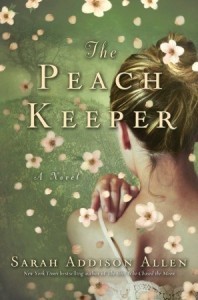
Historical — for me it was probably The King Must Die by Mary Renault:
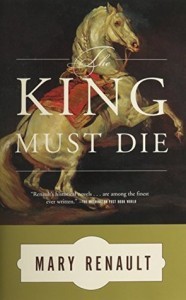
For mysteries, it might have been Rex Stout:
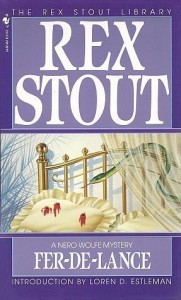
For fantasy, I have no idea, but Robin McKinley probably played a role. BEAUTY, sure, as Angie says but also The Blue Sword.
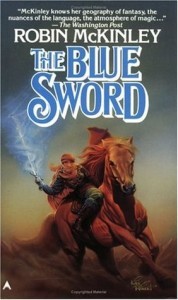
I must agree that for UF / Paranormal, it was Mercy Thompson:
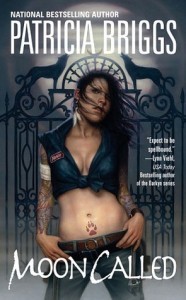
Laura Florand opened up romances for me, no question. I basically never used to read romances — I mean contemporary romances — until I started reading Florand’s chocolate romances.
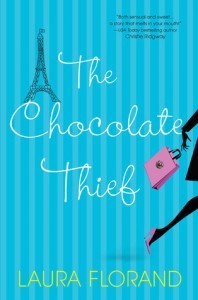
Pretty sure no one is ever going to offer me a gateway book for grimdark or really creepy horror like Lovecraft, though.
How about you? Did you start reading any new-to-you genre or subgenre because of an identifiable author or book?

Five romance-free fantasy novels
Now that we’re past Valentine’s Day, let’s have some stories that have no or almost no romantic element. These make a nice change for those of us who think romance is not an essential component to storytelling and sometimes like our protagonists to just save the world without falling in love along the way.
These stories are not necessary romance-free as the series develops. But those that are first books have essentially zero romance. So:
Five fantasy novels where the protagonist does not fall in love:
Patricia McKillip – The Book of Atrix Wolfe
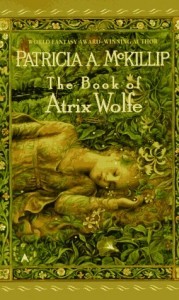
This is such a perfect book, and honestly, not only did it not need romance, but romance would have ruined it. Or turned it into a completely different book.
Tamora Pierce – Beka Cooper, Terrier. I thought this book was a huge increase in sophistication for Pierce, really at least as far as early MG to older YA. Contrast this with the casual insta-love in some of Pierce’s earlier works. This one is so different. Here, Beka Cooper meets a handsome, competent, secretive, ambitious thief . . . and does not fall in love. Good for her!
Ransom Riggs – Miss Peregrine’s Home for Peculiar Children. I actually preferred the creepy horror-ish beginning to the peculiar fantasy of the second half as we start to discover what is actually going on. I haven’t quite gotten around to going on with the series. But I liked this book, and I appreciated how the characters were involved with figuring things out and didn’t get involved with each other.
Django Wexler – The Thousand Names. Loved this book! Also loved how no one falls in love during the fast-paced, perilous adventure and how the main protagonist’s story involved growing into herself and into her new responsibilities rather than falling in love. Honestly, I can’t wait for the last book of this series to come out because I will SO enjoy going back to re-read it from the beginning.
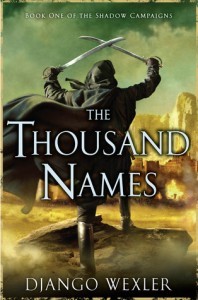
Scott Lynch – The Lies of Locke Lamora. Romance appears later in the series. And a very fraught romance it is. But this first book doesn’t have that. And all the way through, even after the romance becomes more important, the relationship between Locke and Jean is really the central relationship. Just on the edge of too gritty for me, but the series never pushes the grittiness envelope toooo far, quite, and I admire the way Lynch is developing this complicated story.
It’s tough to think of fantasy novels that really do not have a romantic element, but I’ve sure I’ve missed a few. Can anybody add to this list?

February 14, 2016
Two top-five romance lists for Valentine’s Day
Romances I mostly dislike: Insta-love romances.
Romances I mostly despise: Obsessive angst-filled romances.
Nevertheless, I do often like a romance element in fantasy novels, particularly if it slow or subtle or both. So:
Super-slow romances in SFF: I mean the kind of romance where the protagonist may not even realize that romance is in the offing till the second book. *That* slow. Here are five SFF romances that are particularly slow to develop:
CJ Cherryh – Morgaine tetralogy. Cherryh gets all the way to the 4th books before she moves ahead with the romance element.
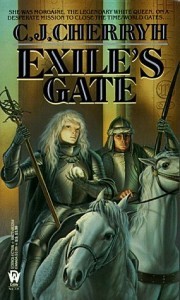
CJ Cherryh – Paladin. A single book, but a long one, over the course of which the two main characters’ relationship slowly shifts from master-student to commitment and understated love.
Andrea K Höst – Touchstone trilogy — I was going to stick to fantasy rather than SF, but I particularly love this very slow romance. I just *love* how Cassandra hardly even notices Kaoren at first. And even though she is a little obsessive for a while, not annoyingly so.
Lindsay Buroker – the Emperor’s Edge series. Sicarius is admittedly more than a bit over the top. But I love the relationship between him and Amaranthe.
Naomi Novik — Uprooted — not quite as slow because it’s one book rather than a series, but it certainly feels slow as you read the story.
Subtle romances are a little different from slow-burn romances. These are a handful of romances where you frankly might miss the romance entirely if you weren’t paying attention, at least at first. The author really puts the romance in the background, where it may be super important, but definitely does not spatter the entire book with little glittering hearts.
CJ Cherryh – The Goblin Mirror. A slow, subtle story in general, with a *very* subtle romance.
MWT – The Queen of Attolia / The King of Attolia. Super subtle, even though the relationship is extremely important to both Gen and Irene.
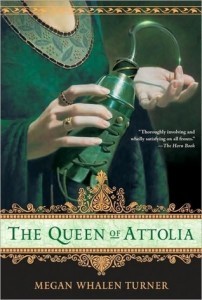
MWT – A Conspiracy of Kings. Again, very important and very subtle.
Robin McKinley – The Hero and the Crown. The romance between Luthe and Aerin is quiet, but the one between Aerin and Tor is both quiet and very subtle.
LMB – The Curse of Chalion. I love the way the relationship between Caz and Betriz develops.
And one more story that I think offers a subtle romance:
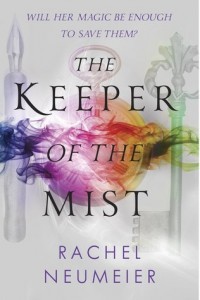

Two top five romances for Valentine’s Day
Romances I mostly dislike: Insta-love romances.
Romances I mostly despise: Obsessive angst-filled romances.
Nevertheless, I do often like a romance element in fantasy novels, particularly if it slow or subtle or both. So:
Super-slow romances in SFF: I mean the kind of romance where the protagonist may not even realize that romance is in the offing till the second book. *That* slow. Here are five SFF romances that are particularly slow to develop:
CJ Cherryh – Morgaine tetralogy. Cherryh gets all the way to the 4th books before she moves ahead with the romance element.

CJ Cherryh – Paladin. A single book, but a long one, over the course of which the two main characters’ relationship slowly shifts from master-student to commitment and understated love.
Andrea K Höst – Touchstone trilogy — I was going to stick to fantasy rather than SF, but I particularly love this very slow romance. I just *love* how Cassandra hardly even notices Kaoren at first. And even though she is a little obsessive for a while, not annoyingly so.
Lindsay Buroker – the Emperor’s Edge series. Sicarius is admittedly more than a bit over the top. But I love the relationship between him and Amaranthe.
Naomi Novik — Uprooted — not quite as slow because it’s one book rather than a series, but it certainly feels slow as you read the story.
Subtle romances are a little different from slow-burn romances. These are a handful of romances where you frankly might miss the romance entirely if you weren’t paying attention, at least at first. The author really puts the romance in the background, where it may be super important, but definitely does not spatter the entire book with little glittering hearts.
CJ Cherryh – The Goblin Mirror. A slow, subtle story in general, with a *very* subtle romance.
MWT – The Queen of Attolia / The King of Attolia. Super subtle, even though the relationship is extremely important to both Gen and Irene.

MWT – A Conspiracy of Kings. Again, very important and very subtle.
Robin McKinley – The Hero and the Crown. The romance between Luthe and Aerin is quiet, but the one between Aerin and Tor is both quiet and very subtle.
LMB – The Curse of Chalion. I love the way the relationship between Caz and Betriz develops.
And one more story that I think offers a subtle romance:


February 12, 2016
Recent Reading: KAREN MEMORY by Elizabeth Bear
So different from the Eternal Sky trilogy! That one was epic fantasy, with broad scope and about a million pov characters. I enjoyed it and admired it, but I liked Karen Memory quite a bit better, mostly because it’s got just the one protagonist and I loved her voice.
Neat cover, too.
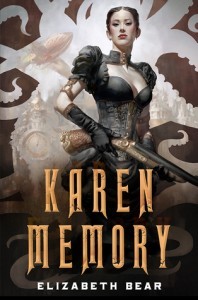
Yes, that is an octopus behind the protagonist.
Anyway:
++++++++++++
You ain’t gonna like what I have to tell you, but I’m gonna tell you anyway. See, My name is Karen Memery, like “memory” only spelt with an e, and I’m one of the girls what works in the Hôtel Mon Cherie on Amity Street. “Hôtel” has a little hat over the o like that. It’s French, so Beatrice tells me.
Some call it the Cherry Hotel. But most just say it’s Madame Damnable’s Sewing Circle and have done. So I guess that makes me a seamstress, just like Beatrice and Miss Francina and Pollywog and Effie and all the other girls. I play my sewing machine tax to the city, which is fifty dollar a week, and they don’t care if your sewing machine’s got a foot treadle, if you take my meaning.
Which ain’t to say we ain’t got a sewing machine. We’ve got two, and old-style one with a black cast-iron body and a shiny chrome wheel, and one of the new steel-geared brass ones that run on water pressure, such that you stand inside of and move with your whole body, and it does the cutting and stitching and steam pressing, too.
Them two machines sit out in a corner of the parlor as a kind of a joke.
I can use the old-fashioned one – I learned to sew, I mean really sew – pretty good after Mama died – and Miss Francina is teaching me to use the new one to do fancy work, though it kind of scares me. And it fits her, so it’s big as your grandpa’s trousers on me. But the thing is, nobody in Rapid City sells the kind of dresses we parlor girls need, so it’s make our own patterned after fashion dolls from Paris and London and New York or it’s pay a ladies’ tailor two-thirds your wage for something you don’t like as well.
But as you can imagine, a house full of ladies like this goes through a lot of frocks and a lot of mending. So it pays to know how to sew both ways, so to speak.
Really pays. Miss Francina and me, we charge less than the ladies’ tailors. And it’s easier to do fittings when you live with the girls. And every penny I makes goes into the knotted sock in my room for when I get too old for sewing. I have a plan, see.
++++++++++++
Okay, I know people argue about what is “really” steampunk, and I don’t think I’ve read enough maybe-steampunk to have an opinion about that, but I’d certainly call Karen Memory steampunk. It’s got airships, but it’s also got powered armor – steam powered! – only it doesn’t seem intended to be armor; it’s meant for thing like . . . sewing machines. You fill the machine’s reservoirs with water and kerosene, strap yourself in, and off you go, sewing.
You know why you have crazy things like this? Because of genius inventors who pay the mad science tax and then have the right to tinker with crazy machines. The mad science tax is my very favorite detail in this crazy, visually spectacular, comic-book-y world. This book is definitely setting-heavy. Most of the story takes place in Rapid City (took me forever to figure out Rapid City is located where our Seattle is), a city constructed with all these raised sidewalks and things way above the original street level, so you have the new sidewalk level at about the level of third-story windows and when you leave by the front door, you have to climb a ladder to get up to the main streets. The whole city is young and vibrant and still under construction. By construction workers wearing powered armor, of course.
So the setting is baroque and delightful. The story is set after what I guess must have been the equivalent of the Civil War, with slaves freed but women not yet able to vote, and a gold rush going on in Alaska. There’s a Wild West feel to the story despite the west coast setting, with a marshal from the west tracking down a killer and other elements you’d typically see in westerns. Plus you get Bear’s attention to detail, which adds depth and a feeling of reality to the setting despite its crazy steampunk elements.
The plot is also very comic-book-y, with criminal masterminds and foreign agents and mad science. Add one desperate crisis after another, and villainy and heroism and desperate rescues and daring escapes and all like that. Definitely a roller-coaster ride of a book.
Karen Memory . . . I mean Memery, and I’m not sure why Bear chose to fiddle the spelling like that and then title the book as she did . . . anyway, Karen’s much-loved father died when she was a teenager, and that’s why she became a prostitute. Madame Damnable is one of those extra kind and competent madams who runs an enlightened whorehouse where the prostitutes are happy to earn a decent living turning tricks, so that’s pretty much as unbelievable as the steam powered sewing machine. Not that Bear doesn’t pull it off; the trope works perfectly well here; it’s one of the ways she draws a super distinct line between the Good Guys and the Bad Guys, and in this kind of story you want that line to be just as distinct as you can make it, I think.
Anyway, Karen is a fine protagonist: engaging voice, courageous, determined. And the supporting characters are good, if drawn in quick, clichéd lines – I don’t mean that as a criticism, and the use of stereotypes – the big, competent, polite marshal who always gets his man, the Comanche sidekick who sneaks around on rooftops and rides so well, the Chinese ninja-type – who is a woman, but still – and so on: all of that is perfect for the dime-novel plot and the over-the-top steampunk setting.
One nitpicky detail. No, two.
First, you know how in the movie “Titanic” everyone had pretty much the attitudes common to the age, except for the protagonists who had Enlightened Modern Attitudes About Everything, so that the audience would be able to identify with the protagonists in a self-satisfied kind of way. Well, Karen Memory pretty much does that, too. Karen has such modern thoughts about race and sexism and how all people are worthy of respect, it kind of made me roll my eyes. Do you *really* think a whore whose father was no one special would feel offended at being expected to use the servant’s entrance to the mayor’s house? Don’t you think a woman of the time would kind of find that normal, perhaps even appropriate? Wouldn’t tradesmen delivering goods come to a side door of Madame Damnable’s house, at least during working hours? So I thought this kind of thing really did niggle away at the reality of the setting, or perhaps I mean the the veracity of the voice. I thought Bear could have questioned the racism and sexism of the setting more via subtext rather than making her protagonist a bit too good to be true.
Second, and this is probably just me, but I hate, hate, hate love at first sight. One glimpse, hardly a word exchanged, and the protagonist has lost her heart permanently. How lucky for her the love object turns out to return her feelings! Isn’t that convenient?
It’s not that Bear doesn’t more or less pull this trope off, because she is a really good writer who can make stuff like that work. More or less. But I long for the day the protagonist falls hard at a glance and the love object is just not interested and the protagonist has to deal with her stupid insta-crush not working out.
Despite these details, I want to reiterate, this is an entertaining, beautifully told story with an ornate, delightful setting and a compelling narrator. You get good guys you can root for and bad guys you can hate, and the good guys totally win and the bad guys totally lose, and there are a whole bunch of dire, exciting moments on the way to that happy ending.
Overall rating, four and a half stars, rounding up to five when I actually go over to Goodreads and Amazon to rate this cause that’s how I roll.

February 11, 2016
How many of these books have you read?
This article is a bit silly — I mean, the title is actually “What Ivy-League Students are Reading That You Aren’t”, which strikes me as, well, silly. I mean, does the author — Christopher Ingraham — mean that “we” aren’t reading those books NOW? Because whether or not we read them in college, there’s no special reason to expect us to be reading them again right this minute, is there?
Also, when he looks at “all books assigned,” he includes . . . textbooks! Like Campbell’s BIOLOGY. That’s *really* silly.
But I like this one bit where the article checks out the books that are most assigned in actual English classes. Here Ingraham compares the books most assigned overall to the ones most assigned by the Ivies. That’s at least mildly interesting, don’t you think? So here:
All Schools:
Frankenstein
Canterbury Tales
Paradise Lost
Heart of Darkness
Hamlet
The Love Song of J Alfred Prufrock
The Yellow Wallpaper
Young Goodman Brown
The Awakening
Oedipus
That actually strikes me as a pretty good list! I don’t think “The Yellow Wallpaper” is a novel, though. Isn’t that a short story? Creepy? A woman is going insane? Pretty sure I’m remembering the right story.
Interestingly, I’ve read (at least parts of) everything above The Love Song of J. AP. Below that, only “The Yellow Wallpaper.” I’ve never even heard of Young Goodman Brown.
Overall, though, I’d say this list is reassuring considering we keep hearing that today’s college freshmen are reading on something like the seventh grade level.
To compare, here’s the list from the Ivies:
Canterbury Tales
Paradise Lost
Persuasion
The Faerie Queen
Hamlet
The Spanish Trilogy
Heart of Darkness
Jude the Obscure
Twelfth Night
Frankenstein
Persuasion! That’s good to see. The non-Ivy students are missing out if they never read Austen. And the Ivies get to read a comedy as well as a tragedy, lucky them. Still, reasonable overlap, I’d say. Again it seems peculiar to include one of these works — “The Spanish Trilogy” is a poem, not a novel — I mean, a relatively short poem, not like The Faerie Queen or whatever — so I really don’t think the criteria for these lists were sufficiently strict.
Although I’m pretty sure I’ve read Frankenstein, I’m almost totally sure it wasn’t assigned in school. Did any of you have Frankenstein actually assigned?
I’ve read eight works from those two lists combined, which is about half of the fifteen works total.
I’d never heard of three of these works: Young Goodman Brown, The Awakening, and the Spanish Trilogy.
I actually enjoyed three of these works: The Canterbury Tales (we only read bits of this), Persuasion, and Twelfth Night.
I loathed one of these: Heart of Darkness.
How about you, these lists spark any fond or loathsome memories?

February 10, 2016
Adverbs are not the work of the Devil
Despite widespread vilification, adverbs are actually perfectly all right. They can in fact be extremely useful.
As evidence, allow me to present ten works by authors that I think are widely recognized as stylists and wordsmiths. I think you’ll know who wrote each of these works:
1. The Changeling Sea: The sea, it seemed to Peri, had taken her mother as well as her father, and left some stranger wandering despairingly among her cooking pots.
2. The Left Hand of Darkness: Rainclouds over dark towers, rain falling in deep streets, a dark storm-beaten city of stone, through which one vein of gold winds slowly.
3. Under Heaven: Some holy men and hermits in their mountains and forests might deliberately act otherwise, going through days like blown leaves, defined by the absence of will or desire, but his was a different nature, and he wasn’t holy.
4. The Hero and the Crown: Galanna’s Gift, it was dryly said, was to be impossible to please.
5. Hild: Like her mother’s words, and her father’s, and her sisters. Utterly unlike Onnen’s otter-swift British or the dark liquid gleam of Irish.
6. The Book of the New Sun: Doubtfully, the boy Eata suggested that we go around. A lift of his thin, freckled arm indicated the thousands of paces of wall stretching across the slum and sweeping up the hill until at last they met the high curtain wall of the Citadel.
7. A Fine and Private Place: The balcony weighed the raven down, and the shopkeeper almost caught him as he whisked out the delicatessen door. Frantically he beat his wings to gain altitude, looking like a small black electric fan.
8. Un Lun Dun: It wasn’t that it wasn’t moving; it was furiously not-moving. By the time they got close to the climbing frame, they were creeping exaggeratedly, like cartoon hunters.
9. Howl’s Moving Castle: Fanny looked relieved. Lettie could be awkwardly strong-minded at times.
10. I expect you’ll all recognize this one: When Mr. Bilbo Baggins of Bag End announced that he would shortly be celebrating his eleventy-first birthday with a party of special magnificence, there was much talk and excitement in Hobbiton. Bilbo was very rich and very peculiar, and had been the wonder of the Shire for sixty years, every since his remarkable disappearance and unexpected return.
I found all these examples of adverbs within a page or two of the beginning of each book.
I rest my case.

Ravenclaw is okay
So, FINE, bowing to internet pressure, I finally bothered to register at Pottermore so that I could take the Sorting Hat quiz, which I’ve never taken before.
I should add that although I like the books perfectly well, I perhaps may not have been quite as invested in the outcome as some people who recently found themselves sorted into questionable houses by the new improved Sorting Hat.
It says Ravenclaw means wit, wisdom and learning. Sounds fine!
If you have recently taken the new quiz, did it agree with the old? Or do you feel your new assignment is ALL WRONG and you DON’T KNOW HOW TO COPE?
I did enjoy the Twitterstorm about this a few days ago, which is why I went ahead and took the quiz after reading this post.

Sentence fragments: are they okay?
Short answer: Yes, if you do it right, so that they work.
Long answer: Here’s Chuck Wendig’s much more extensive answer to this same question.
Chuck provides many instances of authors using sentence fragments, or as they’re sometimes called when used on purpose for effect, English minor sentences. But he doesn’t illustrate this with the example that leaped to my mind which is this:
An April night in Atlanta between thunderstorms: dark and warm and wet, sidewalks shiny with rain and slick with torn leaves and fallen azalea blossoms. Nearly midnight. I had been walking for nearly an hour, covering four or five miles. I wasn’t tired. I wasn’t sleepy.
This is the beginning of THE BLUE PLACE by Nicola Griffith, and these few lines sold me on the book. Yes, because of the sentence fragments. I found this opening evocative and I appreciated the craft demonstrated by the use of those fragments. (It was indeed a really good book, btw).
When Dickens introduces Abel Magwitch in GREAT EXPECTATIONS, he suddenly starts using a whole bunch of fragment sentences. I don’t have the book in front of me, so I can’t quote it, but it’s true. Get out your copy and look at that scene.
I’m sure fragment sentences can be used to do all kinds of things, but in both the cases above and also in some of the ones Chuck quotes, fragments are being used to still the action and paint the scene. It’s as though the author is using a cinematic technique, slowing or stilling the camera’s motion to allow the viewer to see the images.
Of course this is not the same as using fragments accidentally because you just can’t tell the difference, which I hope is still rare in published fiction.
Chuck doesn’t mention it, but imo, on the other side of grammatically correct writing, comma splices can be used to give a sense of rushed speech or rushed thought, which can also be useful. For all I know, someone somewhere has even pulled off actual run-on sentences in a way that worked, though I can’t think of an example.
Chuck’s comments boil down at the end of his post to:
Writing involves a series of stylistic choices.
Sometimes these choices mean breaking rules.
It’s okay to make these choices as an author.
It’s okay to not like these choices as a reader.
Yep. That.




